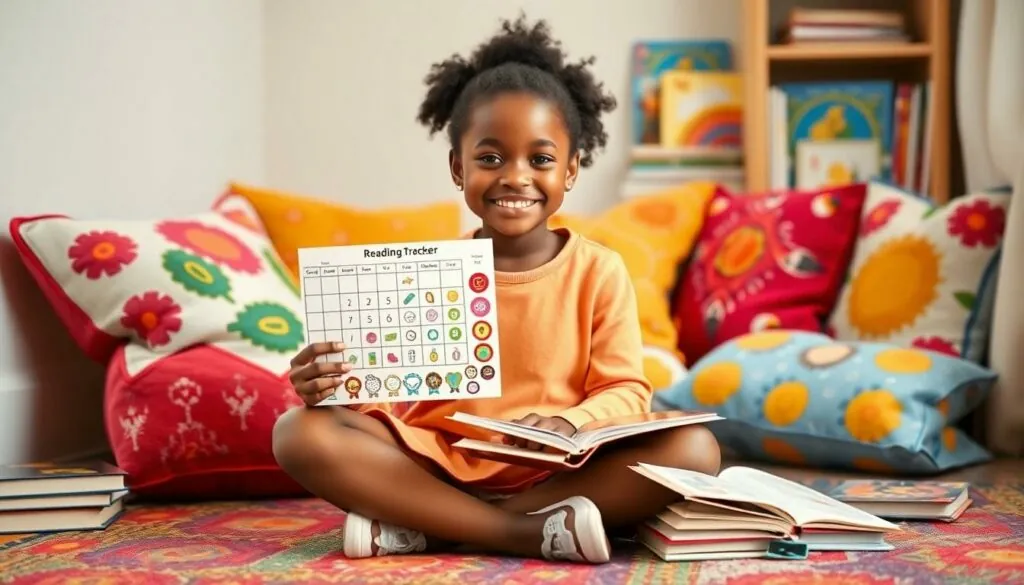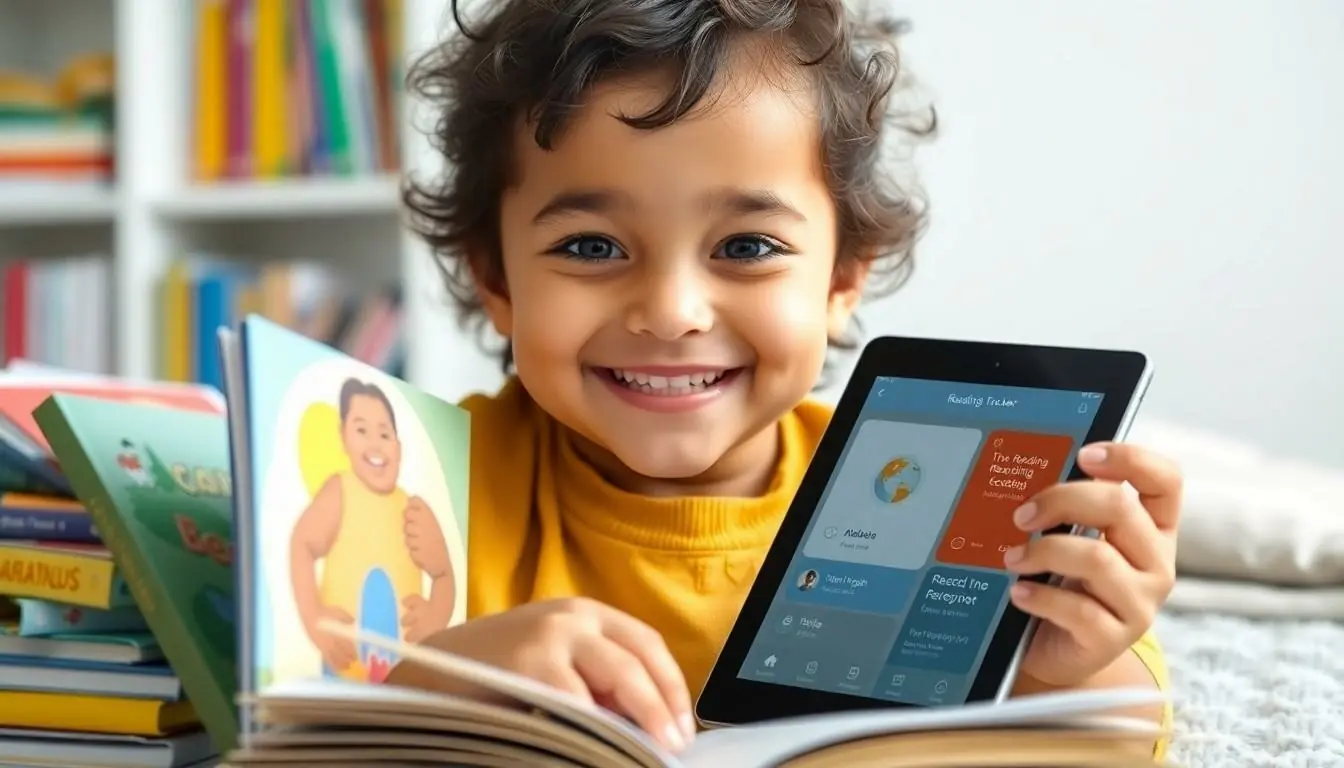Table of Contents
ToggleIn a world where screens dominate and distractions lurk around every corner, getting kids excited about reading can feel like herding cats. But fear not! A reading tracker for kids is here to save the day, turning reluctant readers into enthusiastic bookworms faster than you can say “once upon a time.”
Overview Of Reading Trackers For Kids
Reading trackers for kids offer an effective solution to inspire a love for reading. These tools help parents and educators monitor reading habits while making the experience engaging. By using a reading tracker, children can celebrate their accomplishments and set personal reading goals.
Many reading trackers feature fun elements like stickers, badges, or rewards. Children find motivation in visual progress displays, which encourage them to read more frequently. Some trackers even include interactive apps that provide challenges and rewards for completing books.
Several options are available on the market, ranging from apps to physical charts. Many digital trackers allow customization, enabling children to input their chosen books and track their reading time. Physical trackers often take the form of colorful charts that kids can fill out as they progress.
Research indicates that tracking reading progress correlates with increased literacy rates. These tools foster a sense of accomplishment, encouraging kids to tackle more challenging books over time. Furthermore, a reading tracker can create opportunities for discussions between children and their parents or teachers, enhancing comprehension skills.
Incorporating reading trackers into daily routines helps build lifelong reading habits. Engaging children with personalized goals and rewards leads to a positive reading environment. Ultimately, reading trackers serve as a valuable resource in nurturing a passion for reading amidst distractions.
Features To Look For
Choosing the right reading tracker for kids involves evaluating several key features. Prioritizing these elements helps ensure engagement and effectiveness.
User-Friendly Interface
A user-friendly interface enhances the reading tracker experience. Intuitive navigation encourages kids to explore the app or chart. Simple design elements, like large buttons and vibrant colors, capture children’s attention. Accessibility is crucial; look for options that require minimal setup and are easily readable. Children quickly adapt to trackers that feature age-appropriate icons or graphics. Moreover, consider options that allow customization, giving kids ownership of their reading journey.
Progress Tracking Capabilities
Effective progress tracking capabilities motivate kids to keep reading. Trackers should visually display completed books, reading time, and goals. Regular updates help maintain interest, while graphs or charts illustrate growth over time. Daily or weekly progress reports create a sense of achievement. Sharing this information with parents or teachers strengthens accountability. Additionally, some trackers incorporate reading logs, promoting self-reflection and deeper comprehension.
Rewards And Gamification Elements
Rewards and gamification elements make reading more exciting. Look for features that offer stickers, badges, or points for reading milestones. Kids enjoy earning incentives, which fosters a competitive spirit and encourages reading. Interactive elements, like challenges or quizzes, can enhance the learning experience. Building a sense of community through shared goals helps promote collaborative reading efforts. Incorporating these aspects ensures that children see reading as a fun and rewarding activity.
Popular Reading Trackers For Kids
Reading trackers engage young readers by making literacy enjoyable and measurable. Several options cater to different preferences and learning styles.
Review Of Top Options
Several notable reading trackers appeal to kids. Reading Rockets offers a fun web-based platform that features interactive games and reading challenges. Epic! provides access to thousands of books and tracks reading minutes while offering personalized recommendations. Biblionasium serves as a social network for young readers, allowing kids to create reading lists and review books. BookTrack presents a simple, colorful printable chart that incentivizes reading with rewards. Each of these trackers supports various activities aimed at developing a love for reading.
Comparison Of Key Features
Key features often differentiate these reading trackers. User interface encompasses intuitive designs that attract children’s attention and keep them engaged. Progress tracking varies, with options displaying book completion rates and reading goals visually. Reward systems feature prominently in many apps, using gamification to motivate young users through achieving milestones and collecting badges. Community engagement encourages interaction among readers, fostering discussions about favorite books. Each feature plays a critical role in enhancing the reading experience for children.
Benefits Of Using A Reading Tracker
Reading trackers offer numerous advantages for kids, especially in a distraction-heavy environment. They serve as a catalyst for building engagement and fostering a love for reading.
Encouragement And Motivation
Reading trackers provide consistent encouragement and motivation for children. Visual representations of progress, such as stars or badges, stimulate excitement about reading. Kids feel a sense of achievement when they see how much they’ve accomplished. Parents can enhance this motivation through small rewards for milestones achieved. Incorporating friendly challenges into the reading tracker can further inspire kids to explore different genres. Sharing achievements within a community creates an engaging atmosphere that supports reading among peers. Overall, a reading tracker transforms the reading journey into an enjoyable experience filled with incentives.
Improved Reading Skills
Tracking reading progress significantly improves children’s reading skills. Parents and educators can identify trends in reading habits through monitored data. Children become aware of their strengths and weaknesses, which guides their selection of age-appropriate books. Engaging with diverse reading materials enhances vocabulary and comprehension abilities. Exploring various genres exposes kids to different writing styles and cultural perspectives. Regular discussions about their readings foster critical thinking and retention of information. Ultimately, reading trackers equip kids with essential tools to nurture lifelong literacy skills.
Conclusion
Embracing a reading tracker can significantly enhance a child’s reading journey. By integrating fun and engaging elements into the process, these tools not only motivate young readers but also foster a deeper connection with books. As children see their progress visually represented, they gain a sense of accomplishment that encourages them to explore new genres and tackle more challenging reads.
Parents and educators play a vital role in this journey by using trackers to create a supportive reading environment. With the right tracker, kids can develop lifelong literacy skills while enjoying the adventure of reading. Ultimately, investing in a reading tracker is a step towards nurturing enthusiastic readers who find joy in the world of books.








